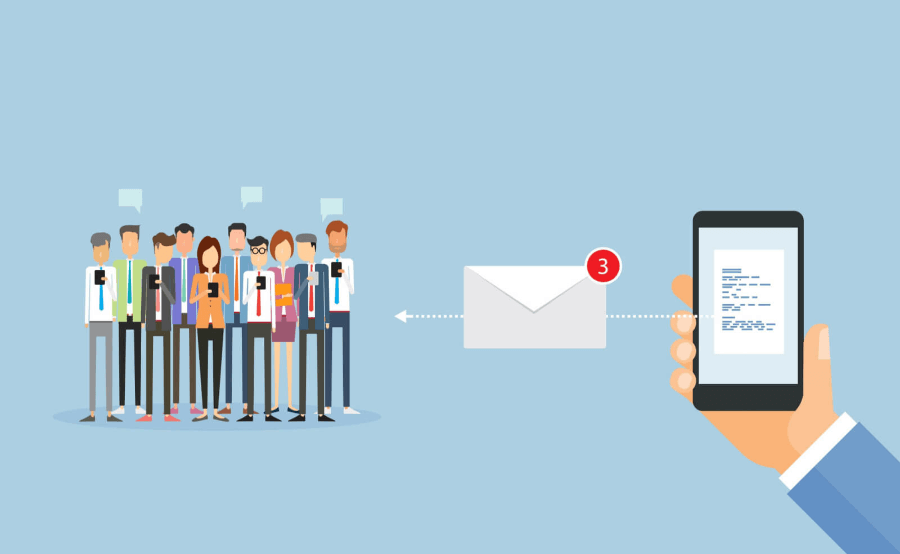📑Table of Contents:
- Why SMS Marketing Works
- Step 1: Define Your Goal
- Step 2: Understand Legal Compliance
- Step 3: Build a Quality Subscriber List
- Step 4: Choose the Right SMS Marketing Platform
- Step 5: Segment Your Audience
- Step 6: Craft the Perfect Message
- Step 7: Timing Is Everything
- Step 8: Automate and Schedule Messages
- Step 9: Track Key Metrics and KPIs
- Step 10: Optimize and Improve Continuously
- Step 11: Integrate SMS with Other Channels
- Step 12: Avoid Common Mistakes
- Step 13: Leverage Advanced Features
- Step 14: Build Customer Trust
- Step 15: Scale Your Campaign
- The Future of SMS Marketing
- Final Thoughts

SMS marketing has become one of the most direct, cost-effective, and high-conversion digital marketing tools today. Yet, many brands still underestimate its potential. With open rates as high as 98%, text messaging offers a direct line to customers that few other channels can match.
Whether you’re a small business owner, marketer, or agency professional, learning how to launch an effective SMS campaign can unlock new levels of engagement, loyalty, and revenue.
This guide will walk you through everything — from setup to optimization — step by step.
Why SMS Marketing Works
Before jumping into setup, it’s essential to understand why SMS works so well.
Consumers check their phones dozens of times a day. Text messages are short, personal, and immediate. Unlike emails, which can sit unread for hours, SMS gets noticed right away.
Here’s what makes SMS stand out:
- High open rates: Nearly every text gets read within minutes.
- Low competition: Fewer brands use SMS compared to email or social ads.
- Direct engagement: Texts reach customers instantly, without algorithms.
- Two-way communication: Customers can reply, making it conversational.
- High ROI: Campaigns cost little and deliver excellent conversions.
Now that you know why SMS matters, let’s break down how to build your campaign — from planning to execution.
Step 1: Define Your Goal
Every successful campaign starts with a clear goal. What do you want to achieve?
Common SMS marketing goals include:
- Driving traffic to a website or landing page.
- Increasing sales or bookings.
- Promoting new products or offers.
- Sending reminders, alerts, or updates.
- Building stronger customer relationships.
Your goal will shape every other decision — from message tone to frequency.
Pro Tip: Make goals measurable. For example, “Increase repeat purchases by 20% within three months” is better than “Increase customer loyalty.”
Step 2: Understand Legal Compliance
Before you send a single message, you must follow SMS marketing regulations. This is not optional — it protects both you and your audience.
Different countries have different laws, but here are the most common rules:
- Get explicit consent: Customers must opt in before receiving texts.
- Provide opt-out instructions: Every message should include a way to unsubscribe (like “Reply STOP to opt out”).
- Identify your brand: Don’t send anonymous messages.
- Respect quiet hours: Avoid sending messages too early or too late.
- Keep records: Store opt-in and opt-out data for compliance proof.
For U.S.-based campaigns, follow the Telephone Consumer Protection Act (TCPA) and CTIA guidelines. If you’re marketing internationally, check GDPR for Europe or CASL for Canada.
Pro Tip: Use a trusted SMS platform that automatically manages compliance features like opt-outs and consent logs.
Step 3: Build a Quality Subscriber List
Your campaign is only as strong as your list. Never buy phone numbers. Instead, focus on permission-based growth.
Here are several ways to build your SMS list organically:
1. Website Opt-In Forms
Add a sign-up form on your homepage or checkout page. Offer a clear benefit, like “Get 10% off your first order when you join our SMS list.”
2. Point-of-Sale Sign-Ups
If you run a physical store, ask customers to join at checkout. Offer instant perks — like exclusive discounts or loyalty points.
3. Social Media Campaigns
Use social posts or stories to encourage followers to subscribe. Include a short keyword like “Text JOIN to 12345.”
4. Email Invitations
If you already have an email list, invite subscribers to opt into SMS for faster updates.
5. Events and QR Codes
Use QR codes on posters, packaging, or receipts that lead directly to your sign-up form.
Remember: Always explain what users are signing up for. Transparency builds trust and keeps your list clean.
Step 4: Choose the Right SMS Marketing Platform
You’ll need a reliable SMS platform to send messages, automate campaigns, and manage contacts.
When choosing one, look for:
- Ease of use: Simple dashboard and automation tools.
- Scalability: Ability to grow with your business.
- Integration: Connects with your CRM, email, or e-commerce platform.
- Compliance tools: Built-in opt-out and consent management.
- Analytics: Tracks delivery, open, and click rates.
Popular options include ClickSend, Twilio, TextMagic, EZ Texting, and SimpleTexting.
Pro Tip: Start with a free trial to test features before committing long-term.
Step 5: Segment Your Audience
Not every subscriber should receive the same message. Segmentation allows you to send more relevant, personalized texts.
Common segmentation criteria:
- Demographics: Age, location, or gender.
- Purchase behavior: First-time buyers, repeat customers, or inactive users.
- Engagement level: Frequent responders vs. quiet subscribers.
- Interests: Based on preferences or past purchases.
Example:
- “VIP customers” get early access to sales.
- “New subscribers” receive welcome offers.
- “Inactive users” get reactivation messages.
Pro Tip: Personalized texts perform much better. Even adding a first name can increase click-through rates significantly.
Step 6: Craft the Perfect Message
Your SMS message must be short, clear, and actionable. You have 160 characters to grab attention and inspire action.
Here’s a simple formula: Personalization + Value + CTA (Call to Action)
Example: “Hi Alex! Flash Sale: 30% off all shoes today only. Shop now: [short link]”
Message Writing Tips
- Keep it under 160 characters.
- Use your brand name early.
- Add urgency (e.g., “Ends tonight”).
- Include a clear CTA (“Buy now,” “Book today,” etc.).
- Avoid slang or too many emojis.
Pro Tip: Test different tones — friendly, urgent, or exclusive — and see what your audience responds to best.
Step 7: Timing Is Everything
Even a great message can fail if sent at the wrong time.
Analyze your audience’s habits. For retail, lunchtime or late afternoon often works well. For service businesses, mornings might be better.
Avoid early mornings, late nights, and weekends unless your campaign is time-sensitive (like event reminders).
Pro Tip: Use A/B testing to compare response rates at different times. The results will guide your scheduling strategy.
Step 8: Automate and Schedule Messages
Automation saves time and ensures consistency. You can set triggers based on user behavior, time, or specific events.
Examples:
- Welcome messages: Sent right after someone subscribes.
- Birthday offers: Personalized discounts on special dates.
- Appointment reminders: For salons, clinics, or service providers.
- Order updates: Shipment or delivery confirmations.
Automated sequences build relationships while reducing manual work.
Pro Tip: Use drip campaigns — a series of timed texts that nurture leads and build engagement over several days or weeks.
Step 9: Track Key Metrics and KPIs

To improve performance, you must measure results. SMS marketing provides excellent data visibility.
Here are the main metrics to track:
- Delivery rate: Percentage of texts successfully sent.
- Open rate: Usually above 95% — but still worth tracking.
- Click-through rate (CTR): Measures link engagement.
- Conversion rate: Tracks sales or actions from SMS links.
- Opt-out rate: High numbers mean you’re sending too often or irrelevant content.
- Response rate: Measures two-way engagement for feedback or surveys.
Use your platform’s analytics dashboard to monitor performance regularly.
Pro Tip: Set benchmarks. Compare your results against past campaigns to find what truly works.
Step 10: Optimize and Improve Continuously
SMS marketing isn’t “set it and forget it.” Constant optimization keeps your campaigns fresh and effective.
Here’s how to improve performance:
- Test everything: Message wording, timing, and offers.
- Listen to feedback: Monitor replies for common patterns or complaints.
- Refine your list: Remove inactive or opted-out numbers regularly.
- Use link tracking: Identify which CTAs drive the most conversions.
- Experiment with personalization: Try including location or purchase history.
Pro Tip: Run seasonal campaigns (like holiday promotions or product launches) and analyze what drives the highest ROI.
Step 11: Integrate SMS with Other Channels
SMS works best when paired with other marketing channels.
Combine it with:
- Email marketing: Use SMS for urgent updates and email for detailed content.
- Social media: Promote your SMS sign-up on Instagram, Facebook, or X (Twitter).
- CRM systems: Track customer behavior and automate follow-ups.
- E-commerce tools: Send cart reminders or delivery updates.
Example strategy: Send an email about a flash sale in the morning. Then, send an SMS reminder a few hours before it ends. This combination maximizes visibility and conversions.
Step 12: Avoid Common Mistakes
Even experienced marketers can slip up. Avoid these common pitfalls:
- Sending messages without consent.
- Overloading users with too many texts.
- Forgetting personalization.
- Ignoring time zones.
- Using unclear CTAs.
- Neglecting analytics.
Pro Tip: Always think from the recipient’s perspective — would you appreciate receiving this message? If not, rewrite it.
Step 13: Leverage Advanced Features
As you grow, explore advanced tools that take SMS campaigns to the next level.
Two-Way Messaging
Let customers reply directly. It makes your brand approachable and responsive.
MMS (Multimedia Messaging)
Send images, videos, or GIFs to make promotions visually appealing.
Short Links & Tracking
Use URL shorteners with tracking features to measure engagement precisely.
Keywords & Autoresponders
Use custom keywords like “JOIN” or “SALE” to trigger automatic replies or actions.
Integrations
Connect SMS with tools like Shopify, HubSpot, or Salesforce for seamless data flow.
Pro Tip: Advanced features turn a simple campaign into a powerful marketing ecosystem.
Step 14: Build Customer Trust
Trust is the foundation of long-term SMS success. Don’t abuse access to your customers’ phones.
Follow these best practices:
- Be transparent about what you’ll send.
- Respect privacy.
- Keep frequency reasonable.
- Provide value in every text.
- Always offer an easy way to unsubscribe.
Customers who trust your messages are more likely to stay subscribed and engage often.
Step 15: Scale Your Campaign
Once you’ve nailed the basics, it’s time to scale.
You can expand by:
- Adding new audience segments.
- Running local and global campaigns.
- Experimenting with promotions, contests, and surveys.
- Using automation for every customer stage — from lead generation to loyalty.
Scaling is not about sending more texts. It’s about sending smarter texts to the right people, at the right time.
The Future of SMS Marketing
SMS is evolving fast. With technologies like RCS (Rich Communication Services) and AI-driven personalization, brands can now deliver interactive, media-rich experiences directly in text format.
Soon, customers will be able to book services, make payments, and chat with virtual assistants — all within a single message thread.
Businesses that adopt these trends early will stay ahead of the competition and build deeper customer relationships.

Final Thoughts
Starting an SMS marketing campaign may seem technical at first, but it’s surprisingly straightforward once you follow a structured approach.
Define your goal. Build a clean, consent-based list. Craft engaging messages. Track results. Then optimize continuously.
SMS is more than a marketing tool — it’s a bridge between your brand and your customers. Done right, it can transform how people experience your business.
With this A–Z guide, you now have everything you need to start strong and grow fast.
The next step is simple: pick an SMS platform, build your list, and send your first message. Once you do, you’ll see why SMS marketing remains one of the most powerful channels in modern communication.
